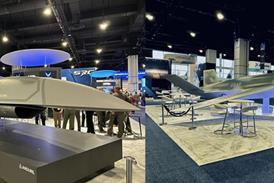It is no surprise that British Airways has challenged the legality of an FAA fine, because the regulations as they stand need clarification
Some woolly thinking is going on at the US Federal Aviation Administration. It is looking to an administrative law judge for an interpretation of one of its own rules.
The FAA is making it quite clear it does not like the decision by a British Airways Boeing 747-400 crew to fly their aircraft on three engines from just after take-off at Los Angeles all the way to the UK. Fair enough. The trouble is, its own rules on the issue are open to the interpretation made by the BA crew. So if the FAA really feels so strongly about this incident, it should accept that this case has dropped through the regulatory cracks and clarify the wording of its rules for the future. Instead, it is hoping that a judge will rule that its existing regulations already say BA should not have done what it did. Meanwhile, the vagaries of the US civil justice system being what they are, no one would be wise to put big money on which way the court ruling will go.
There is another issue here. The BA crew, flying a British-registered aircraft, was flying according to UK Civil Aviation Authority regulations and its own CAA-approved standard operating procedures (SOP) despite the fact that, for part of the flight, it was in US sovereign airspace. This is normal. All national aviation authorities (NAA) – including the FAA – set their own rules based on International Civil Aviation Organisation standards and recommended practices, and the airlines of each country then follow the rules set by their own NAA no matter whose airspace they are flying in, unless specific exceptions to this practice have been published by an individual country. The CAA has made it clear that BA did not infringe any UK rules or its approved SOPs. This is really a matter between the two aviation authorities; but since the FAA did not get its own way through agreed international procedures it is trying another route.
The FAA rules say that, in the case of failure of a single power unit on three- or four-engined aircraft, the captain “may proceed to an airport he selects if, after considering the following, he decides that proceeding to that airport is as safe as landing at the nearest suitable airport”. The BA crew did “consider the following” as per the FAA rule. Besides which, when the aircraft landed at Manchester it had been out of FAA jurisdiction for about 7h.
The charge against BA is that it “operated an aircraft in the United States in an unairworthy condition”. The literal interpretation of this rule is that if any aircraft suffers engine failure in US airspace it is immediately unairworthy. This is a shaky proposition given that, in this case, the FAA rule says the captain “may proceed to an airport he selects” and is not required to land at the nearest suitable airport. In operational terms, once any crew of a three- or four-engined aircraft has had to shut an engine down, decision making about whether to proceed or divert is a continuous process, with all factors pertaining to the flight under active review for the rest of the time the aircraft is airborne. There is no single point at which this crew had to make a decision on a diversion airport and would then have been compelled to stick to that decision come what may.
Since the FAA is working so hard not to change this vague and imperfect rule, it could be deduced that – perhaps – it does not want to do so. Why? Maybe it wants to retain a rule the wording of which gives it the freedom – in the future – to apply a broad interpretation to engine-out cases. On the other hand maybe it hopes the court will give it a precedent, without moving a muscle, to clap the same diversion rules on quads as on twins. Although the argument about extended twin engine operations (ETOPS) has gone quiet for a couple of years, it is still out there – unresolved. At last reading, the FAA and its Aviation Rulemaking Advisory Committee (ARAC) wanted either the commander’s discretion about indefinite continued flight with one engine out to be extended to twins, or the captains of quads to lose their discretion about when and if to divert. The rest of the world’s NAAs signalled that neither would be acceptable, because if a twin loses an engine it has no power unit redundancy, whereas a quad can lose three more before it has no power at all. But the FAA’s thinking in the BA case is consistent with FAA/ARAC objectives. It could “win” whichever way the court rules.
This is a mess. The FAA should clarify its engine-out rules by rewriting them. Then everyone will know where the US agency stands and speculatory comment about US motivation would become unnecessary.
Source: Flight International























